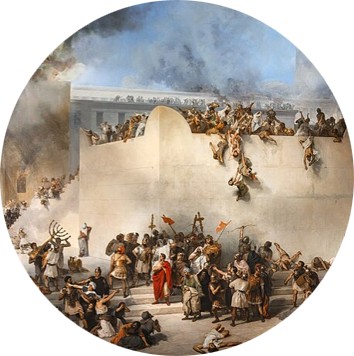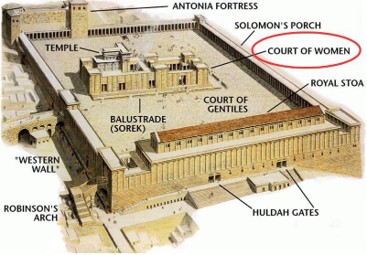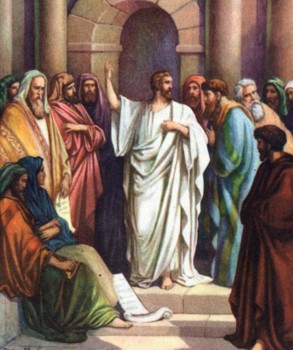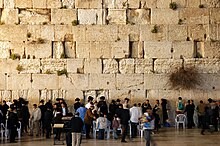TISHA B’AV

Each summer, usually in July or August, observant Jews around the world gather to sit on the floor in dimly lit synagogues. They read from the Book of Lamentations, refrain from eating or drinking for 25 hours, and mourn the destruction of the Temples in Jerusalem. The day is called Tisha B’Av, the 9th day of the Hebrew month of Av. It is the saddest day in the Jewish calendar.
Why so much sorrow? Because, remarkably, on this very same date—Tisha B’Av—which starts this Saturday night, both the First Temple, built by King Solomon, and the Second Temple, lavishly expanded by Herod the Great, were destroyed, nearly 600 years apart.
The Temples: Sacred Space for Worship

The First Temple, built around 957 BCE on Mount Moriah in Jerusalem was the spiritual heart of the Jewish people, housing the Ark of the Covenant and serving as the national center for prayer, sacrifice, and pilgrimage. But in 586 BCE, the Babylonians under King Nebuchadnezzar invaded Jerusalem, burned the Temple to the ground, and sent much of the population into exile in Babylon. That tragic event is the origin of Tisha B’Av as a day of national mourning.

After about 70 years in exile, Jews returned and built a Second Temple on the same site. Though more modest than Solomon’s original, it restored a sense of spiritual stability.
Then, around 20 BCE, Herod the Great—a Roman-appointed (partly) Jewish king—began an ambitious renovation. He expanded the Temple Mount into a vast plaza and rebuilt the Temple as a gleaming monument of white stone and gold. The ancient historian Josephus called it a marvel of the world.

Jesus and the Second Temple
This Second Temple, in its glorious Herodian form, was the Temple that Jesus knew. He was presented there as a baby, debated there with teachers as a boy and called it his, “Father’s house.”

He taught in its courtyards, and famously overturned the moneychangers’ tables within its precincts.
For Jesus, the Temple was a place of divine presence and prophecy, but also a symbol of corruption and coming judgment. In the Gospels, he foretold its destruction—“Not one stone will be left on another”—a prophecy fulfilled in 70 AD, when Roman forces destroyed the Temple during a brutal crackdown on Jewish revolt.
Mourning with Memory and Hope: Tisha b’Av
To this day, Jews mark Tisha B’Av as a time of deep communal mourning. They remember later tragedies as well such as the Spanish Expulsion of 1492 and twentieth-century Holocaust events.
And yet, the tone is not only grief but longing: a yearning for return, for peace, and for spiritual renewal.
For Christians, understanding Tisha B’Av opens a window into the spiritual world that Jesus inhabited. It helps us grasp the depth of Jewish connection to the Temple— and the heartbreak of its loss. It reminds us that sacred space matters, and that longing for God’s closeness is something we all share.
Have you ever visited Jerusalem or stood at the Western Wall? Share your thoughts in the comments—I’d love to hear what sacred space means to you.

Thank you for visiting.
On the steps of Herod’s Temple recently. Yes, they are still there!
Sign up in the sidebar to get on my mailing list to receive my newsletters from Jerusalem and notifications of my posts.



I did visit Jerusalem in 1978. I walked up these steps and stood at this wall. It was a very blessed time as I realized they were there at the time of Jesus going into the temple.
Yes, it’s such a huge thrill, isn’t it, Linda, especially when we live far away from the Bible accounts and then find ourselves right there, where things happened?
In theory, I have that at my disposal, here in Jerusalem. In practice, I am attached to this laptop for many hours of my day…
We were in Israel for our two week honeymoon in November/December 1987. It really was wonderful to see places where Jesus and His disciples would actually have been: the narrow streets, Caiaphas’s house, The Mount of Olives etc.
We watched Jews praying at the Western Wall and ‘posting’ their prayers in the gaps; it seemed so sad to me that they were missing out on the direct connection to God through Jesus.
‘The sacred space’ you write about is now anywhere where I embrace the HolySpirit and have communion, intimacy and relationship with Him, so that means anywhere! Amazing! What a privilege.
How lovely that you were here, Jenny. For, though you are absolutely right that we can have closeness to the Holy Spirit wherever we go, there is something about throwing your arms around the climate, architecture, geography here, where Jesus walked. I have learned a lot about the Burnt House but have not yet visited – I’m saving that up for a special time. I hope to write up about that, too.